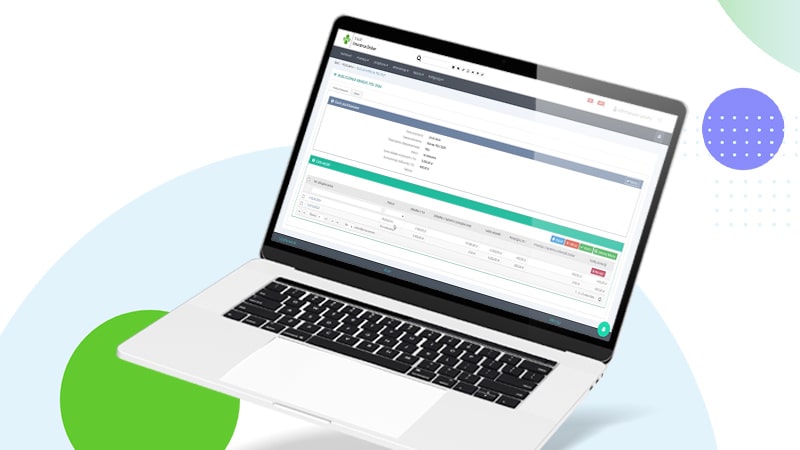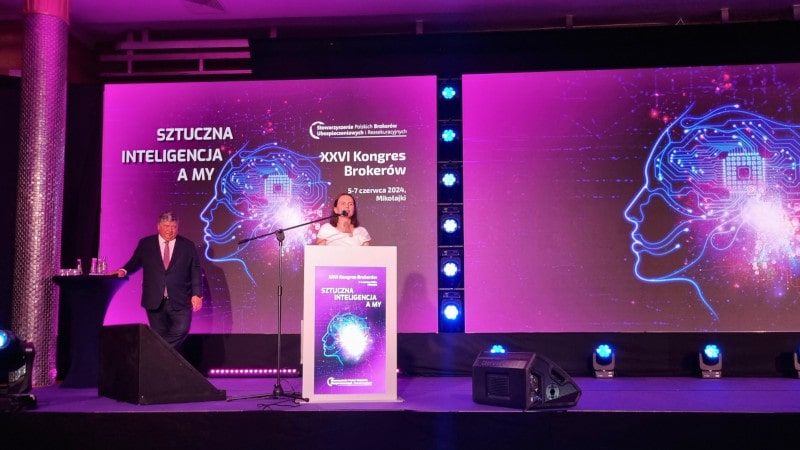An insurance broker’s job is constantly struggling with a huge amount of documentation. The day-to-day management of policies, annexes, forms, and reports can consume a significant amount of time that could be spent properly serving clients and building long-term relationships. Fortunately, modern technology solutions, such as VSoft Insurance Broker, offer effective ways to simplify and automate documentation processes.
1. Intelligent document generation: precision and personalization
VSoft Insurance Broker allows you to create a variety of documents directly from within the software, including invoices or broker recommendations. These documents can be automatically populated with the relevant data, eliminating the need to enter information manually. Flexibility in creating and editing document templates is another convenience. Brokers can use standard templates, but also edit them or create new, customized ones.
With special tools such as word processing add-ons and data copy tag sets, the process of creating personalized documents becomes simple and intuitive.
2. Digital document exchange: the key to customer satisfaction
The VIB system significantly streamlines the process of exchanging documents with customers by offering a simple and secure Customer Portal solution. Customers gain visibility of their policies, payments, claims, and fleets and can exchange documents with their broker. The system allows the broker to have full control over the visibility of documents to the client. Importantly, the broker receives automatic alerts on files added by the client, which enables a quick reaction and effective communication.
3. Advanced reporting: the foundation for sound decisions
An advanced data analysis and reporting tool will certainly help to improve the management of documentation. A variety of reports, both built-in and dynamic, can be generated from within the system. This tool allows the creation of documents that enable a quick response to market changes, help to make informed business decisions, and support effective risk management. Built-in reports include a wide range of summaries, such as aggregate summaries of commissions, production analysis, portfolio structure, or claims. A key element is also the KNF report, which is necessary to meet regulatory requirements. Dynamic reports, on the other hand, using the OData protocol and popular tools such as MS Excel or Power BI, allow the creation of any kind of statements and data presentation.
4. Automated billing: effortless precision
The automated billing module considerably simplifies the commission billing process with insurance companies. This module enables the processing of commission files with an automatic comparison of the data from the commission file with the data in the system. The system also automatically fills in the payment information on insurance contracts, updating installment statuses, which allows for instant monitoring of paid premiums, underpayments, or overpayments. In addition, the module automatically registers commission invoices based on generated settlements, eliminating the need for manual data entry. The automation of the billing process is another argument for implementing the system. Working with documentation becomes easy and not only saves brokers’ time but also minimizes the risk of errors.
5. Broker slips: from proposal to policy in no time
VSoft Insurance Broker also automates the process of creating and handling broker slips. The system allows for the expansion of the database of risks and extensions, enabling the creation of personalized insurance proposals. The broker can easily collate risks, extensions, and subjects of insurance, and then generate a slip document based on the entered data. The system also facilitates the process of sending requests to insurance companies and recording their responses. Based on the collected data, VIB generates an accurate comparison of offers in the form of an Excel file, which can be forwarded to the client along with an automatically generated recommendation. Once the customer accepts the offer, the system allows the policy to be quickly created without the need to re-enter the data.
Efficiency and benefits
Implementing the above tools makes it easier to navigate the maze of documentation and brings tangible benefits to the brokerage firm. The right system and the functionality that goes with it certainly save time, allowing more clients to be served. On the other hand, the reduction in costs associated with paper documentation translates into improved profitability. Brokers actively implementing modern document management solutions gain a competitive advantage in the market. In a world where efficiency and quality of customer service are key success factors, investing in tools to streamline working with documents becomes not so much an option as a necessity for any professional insurance broker.



